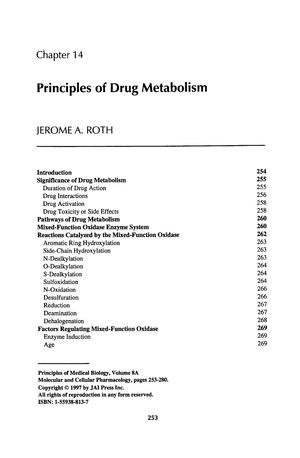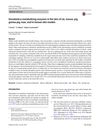Chapter 14: Principles of Drug Metabolism
January 1997
in “
Principles of Medical Biology
”
drug metabolism mixed-function oxidase enzyme system cytochrome P450 enzymes Phase I metabolic processes Phase II metabolic processes enzyme-catalyzed reactions genetic polymorphism N-acetyltransferase monoamine oxidase MAO inhibitors mixed-function oxidase CYP450 enzymes Phase I metabolism Phase II metabolism enzyme reactions genetic variation NAT MAO MAOIs

TLDR Drug metabolism affects how long a drug works, its interactions, activation, and toxicity, and is influenced by genetics, diet, illness, and other drugs.
In 1997, Jerome A. Roth's document provided a comprehensive overview of drug metabolism, highlighting its importance in drug action duration, interactions, activation, and potential toxicity. It detailed the mixed-function oxidase enzyme system's role in converting lipid-soluble drugs into water-soluble forms for excretion and how factors like genetics, diet, illness, and other drugs can affect metabolism rates. The document described Phase I and Phase II metabolic processes, including various enzyme-catalyzed reactions and factors regulating enzyme activity. It also discussed the induction of cytochrome P450 enzymes by drugs, the presence of mixed-function oxidase activity in fetuses, and the impact of age, sex, and genetics on drug metabolism. The importance of considering drug metabolism in different populations, such as the elderly and fetuses, was emphasized, as well as the genetic polymorphism in enzymes like N-acetyltransferase. Additionally, the document covered the specificity of enzymes like monoamine oxidase in the metabolic inactivation of drugs and the development of MAO inhibitors for depression treatment.


